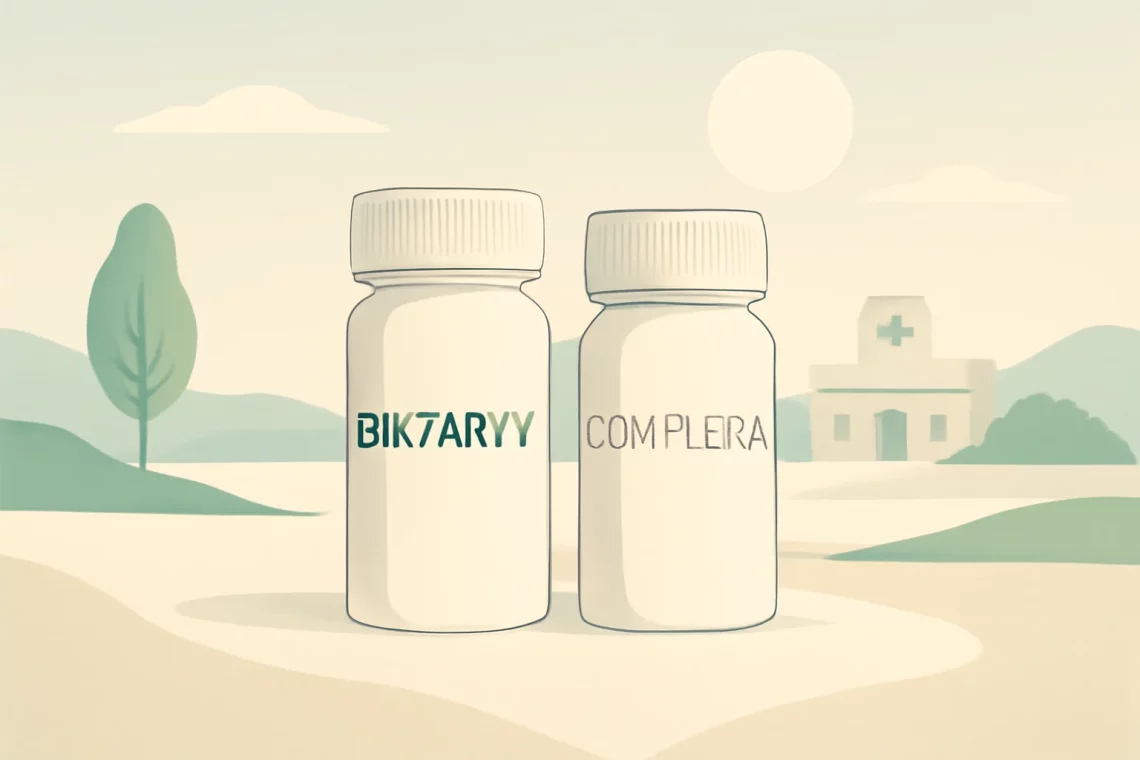
Biktarvy vs Complera: Which HIV Treatment is Right for You?
Biktarvy and Complera are two prominent antiretroviral medications used in the management of HIV infection. As the landscape of HIV treatment continues to evolve, patients and healthcare providers are often faced with the challenge of selecting the most suitable therapy to ensure effective viral suppression while minimizing side effects. Both Biktarvy and Complera have demonstrated efficacy in clinical trials, but they differ in their compositions, mechanisms of action, and dosing regimens.
Understanding these differences is crucial for patients who are navigating the complexities of HIV treatment. Factors such as adherence to the medication regimen, potential side effects, and the patient’s overall health condition play significant roles in determining the best course of action. Additionally, the choice between these two medications may also depend on individual patient factors, including previous treatment history and any co-existing medical conditions.
In this context, it becomes essential to delve deeper into the characteristics of Biktarvy and Complera. By examining their compositions, effectiveness, and side effects, patients and healthcare providers can make informed decisions that align with optimal treatment outcomes. This exploration not only aids in understanding these medications but also contributes to better management of HIV, ultimately enhancing the quality of life for those living with the virus.
Understanding Biktarvy
Biktarvy is a combination therapy that includes three active ingredients: bictegravir, emtricitabine, and tenofovir alafenamide. Each component plays a critical role in suppressing the HIV virus, making Biktarvy a powerful option for many patients. Bictegravir is an integrase strand transfer inhibitor (INSTI) that works by preventing the virus from integrating its genetic material into the host’s DNA. This action is crucial, as it effectively halts the replication process of the virus.
Emtricitabine and tenofovir alafenamide belong to a class of drugs known as nucleoside reverse transcriptase inhibitors (NRTIs). These medications target the reverse transcriptase enzyme, which is essential for converting viral RNA into DNA. By inhibiting this enzyme, these drugs further reduce the viral load in the body, helping to maintain undetectable levels of HIV.
One of the significant advantages of Biktarvy is its once-daily dosing regimen. This simplicity promotes adherence to the treatment plan, which is vital for the long-term success of HIV therapy. Additionally, Biktarvy has been shown to have a favorable side effect profile, with many patients tolerating it well. Common side effects may include mild gastrointestinal disturbances, but serious adverse effects are relatively rare.
Clinical studies have demonstrated that Biktarvy is effective in achieving and maintaining viral suppression in both treatment-naive patients and those who have previously undergone therapy. Its efficacy, combined with a manageable side effect profile, makes Biktarvy a popular choice among healthcare providers and patients alike.
Exploring Complera
Complera is another combination antiretroviral medication that comprises rilpivirine, emtricitabine, and tenofovir disoproxil fumarate. Similar to Biktarvy, Complera combines different mechanisms to combat HIV effectively. Rilpivirine is a non-nucleoside reverse transcriptase inhibitor (NNRTI) that binds to the reverse transcriptase enzyme, blocking the conversion of viral RNA to DNA. This inhibition is crucial in preventing the virus from replicating and spreading.
Emtricitabine and tenofovir disoproxil fumarate serve as the same NRTI components found in Biktarvy, working in tandem with rilpivirine to enhance the overall efficacy of the treatment. The combination of these drugs offers a comprehensive approach to HIV management, addressing the virus from multiple angles.
Complera also features a once-daily dosing regimen, making it convenient for patients. However, it is essential to note that the efficacy of Complera can be influenced by the patient’s viral load at the start of treatment. For optimal results, it is recommended that patients have a viral load below a certain threshold when initiating therapy with Complera.
While many patients tolerate Complera well, there are some potential side effects to consider. Common side effects may include headache, insomnia, and gastrointestinal issues. Additionally, patients with a higher viral load or those who have not been previously treated may face a higher risk of treatment failure with Complera. Therefore, healthcare providers must carefully assess each patient’s individual circumstances when considering this treatment option.
Comparing Efficacy and Safety
When comparing the efficacy and safety profiles of Biktarvy and Complera, it is essential to consider both clinical trial data and real-world experience. Clinical trials for both medications have demonstrated significant reductions in viral load among participants, with many achieving undetectable levels of HIV within a specified timeframe.
Biktarvy has shown a slightly higher efficacy rate in treatment-naive populations when compared to Complera, particularly among individuals with higher baseline viral loads. This distinction may make Biktarvy a more suitable option for patients who are just starting their treatment journey or those who have experienced treatment failures with other regimens.
In terms of safety, both medications have manageable side effect profiles, but the specific reactions can vary between individuals. Biktarvy’s side effects are generally mild and transient, whereas Complera may present with more significant issues for certain patients, particularly those who are treatment-experienced. The risk of drug interactions with Complera is also worth noting, as it can affect patients taking various other medications.
Patient adherence is another critical factor in evaluating these two medications. Biktarvy’s simplified dosing schedule and lower incidence of adverse effects may contribute to better adherence rates, which is crucial for long-term treatment success. Complera, while also adhering to a once-daily regimen, may require more careful monitoring and patient education to ensure optimal outcomes.
Patient Considerations and Conclusion
Selecting the right antiretroviral therapy is a deeply personal decision that should involve a thorough discussion between patients and healthcare providers. Factors such as previous treatment history, overall health, and lifestyle can significantly influence the choice between Biktarvy and Complera.
Patients who prioritize ease of adherence and have a history of treatment failures may lean toward Biktarvy. Conversely, those who have responded well to NNRTIs in the past may find Complera to be a suitable option. It is essential for patients to openly communicate their preferences and concerns, allowing for a tailored approach to their HIV treatment.
In conclusion, both Biktarvy and Complera represent significant advancements in HIV therapy, each with unique benefits and considerations. By weighing the efficacy, safety, and patient-specific factors, individuals can make informed decisions that align with their health goals. Ongoing research and clinical experience will continue to shape the understanding of these medications, ultimately improving the lives of those living with HIV.
*Disclaimer: This article is not intended as medical advice. For any health-related concerns, please consult your healthcare provider.*



